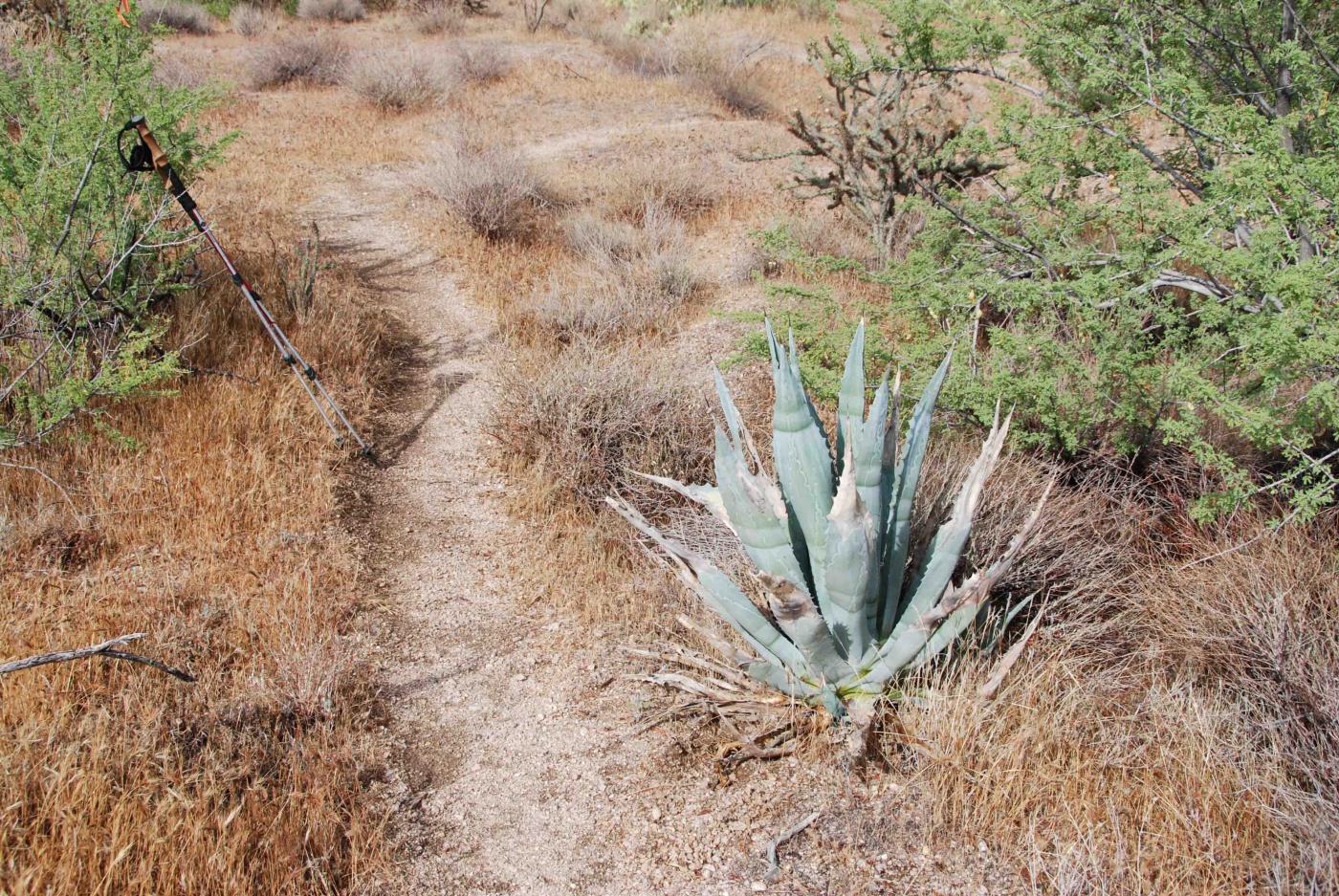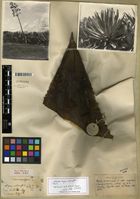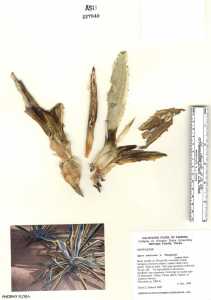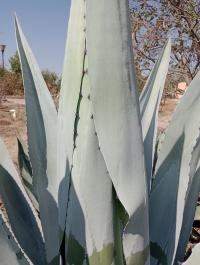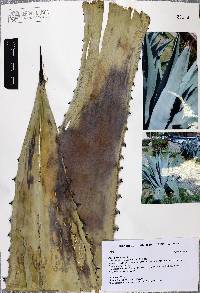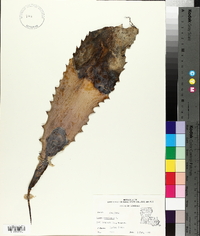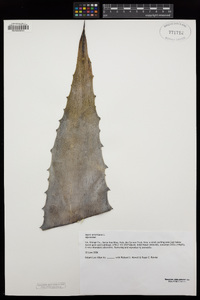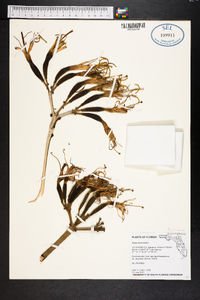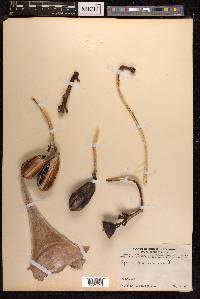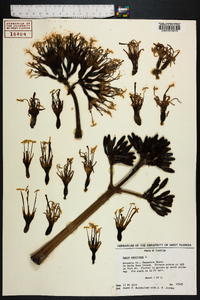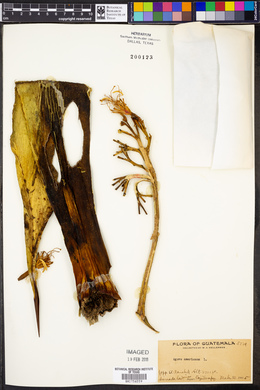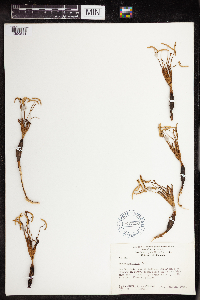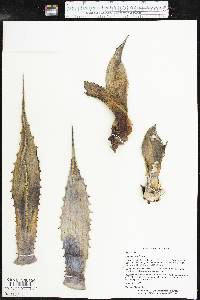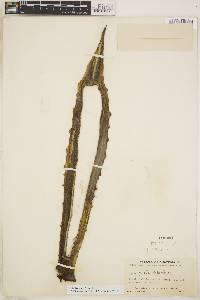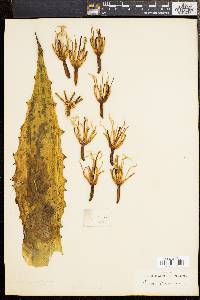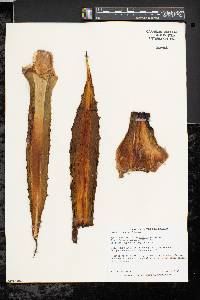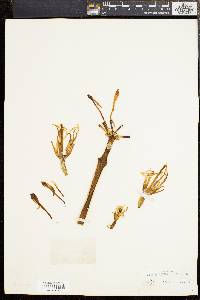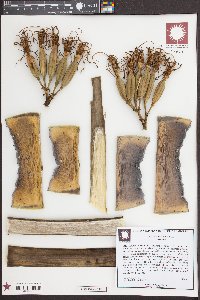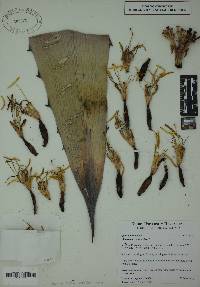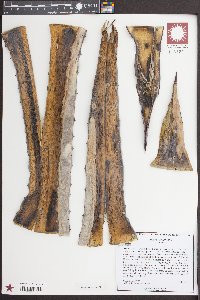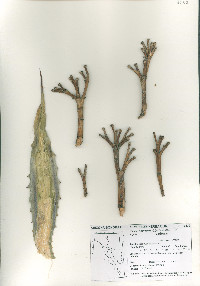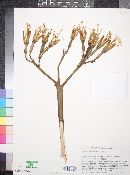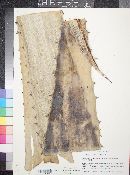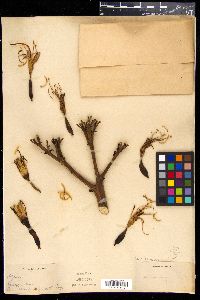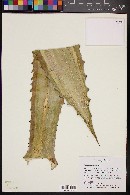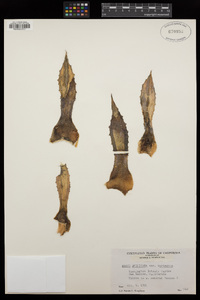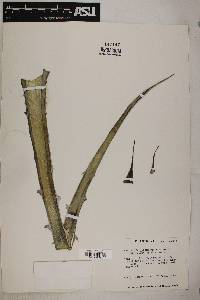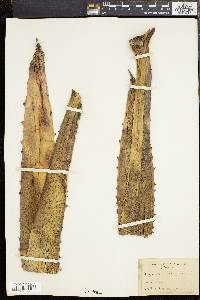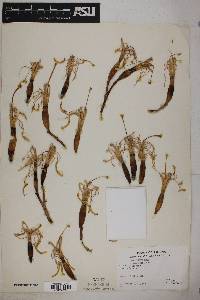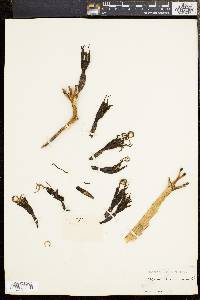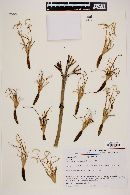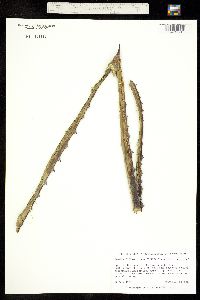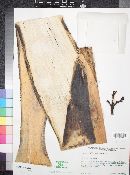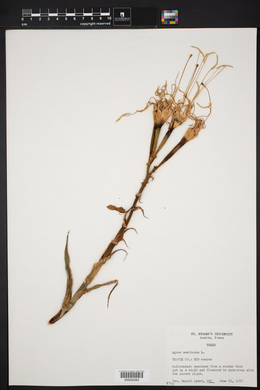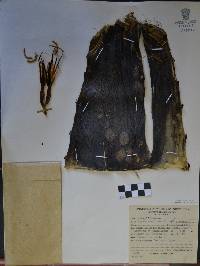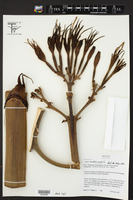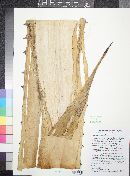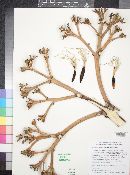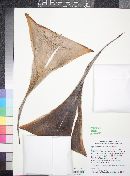Agave americana
|
|
|
|
Family: Asparagaceae
American century plant, more...American Century-Plant, American agave, centuryplant
[Aloe americana (L.) Crantz] |
Plants acaulescent or short-stemmed, commonly suckering, trunks less than 2 m; rosettes not cespitose, 10-20 × 20-37 dm. Leaves erect, spreading to ascending, occasionally reflexed, 80-200 × 15-25 cm; blade light green to green or glaucous-gray, sometimes variegated or cross-zoned, narrowly to broadly lanceolate, smooth, rigid; margins nearly straight or undulate to crenate, armed, teeth single, 5-10 mm, 1-4 cm apart; apical spine dark brown to grayish, conical or subulate, 2-6 cm. Scape 5-9 m. Inflorescences paniculate, not bulbiferous; bracts persistent, triangular, 5-15 cm; lateral branches 15-35, horizontal to slightly ascending, comprising distal 1/3-1/2 of inflorescence, longer than 10 cm. Flowers erect, 7-10.5 cm; perianth yellow, tube funnelform to cylindric, 8-20 × 12-20 mm, limb lobes erect, subequal, 20-35 mm; stamens long-exserted; filaments inserted above mid perianth tube, erect, yellow, 6-9 cm; anthers yellow, 25-35 mm; ovary 3-4.5 cm, neck constricted, 3-6(-8) mm. Capsules short-pedicellate, oblong, 3.5-8 cm, apex beaked. Seeds 6-8 mm. Various chromosome numbers have been reported for Agave americana under a variety of names, typically without regard to the plant´s origin or its precise taxonomic disposition. Nonetheless, the species is most certainly a polyploid complex based on x = 30, with reports of n = 30 and 2n = 60, 120, and 180 documented by S. D. McKelvey and K. Sax (1933), H. Matsuura and T. Sutô (1935), E. B. Granick (1944), A. K. Sharma and U. C. Bhattacharyya (1962), M. S. Cave (1964), S. Banerjee and A. K. Sharma (1987), Huang S. F. et al. (1989) and B. Vijayavalli and P. M. Mathew (1990). Various dysploids have also been reported (A. F. Dyer et al. 1970; J. L. Strother and G. L. Nesom 1997). See H. S. Gentry (1982) for details.
Plant: perennial scapose herbs; Rosettes freely suckering, open, ca. 1-2 m tall, 2-3.7 m broad Leaves: numerous, 10-20 dm long, 1.5-2.5 dm wide, lanceolate, acuminate to abrubtly acuminate, narrowed above thickened base, rigid, plane or guttered or convex, light gray glaucous to light green, sometimes with cross-zoned or variegated patterns, the margins undulate to crenate to straight; teeth regular or variable, the larger ones 5-10 mm long, the smaller ones 3-5 mm long, straight or curved, 1-6 cm apart, brown to pruinose gray, interstitial teeth absent; terminal spine 2-5 cm long, conic to subulate, shallowly grooved above, shiny brown to pruinose gray INFLORESCENCE: with scape 5-9 m tall, open, of 15-35 long lateral horizontal branchlets in upper ½ of flowering stalk, the stalk thick, gray-green to glaucous Flowers: 70-100 mm long, long-pedicellate, fragrance unknown; tepals unequal, erect, thick, involute, pale yellow, the outer ones 25-38 mm long, thick linear-lanceolate, the apex sometimes red-tipped, the inner ones 2-3 mm shorter; filaments 60-90 mm long, inserted near mid-tube, light yellow, the anthers 30-36 mm long; ovary 30-45 mm long with constricted, grooved neck, green, the style 55-72 mm long when stigma is receptive, yellow; floral tube 8-20 mm long, 16-20 mm wide, deeply grooved, green Fruit: a loculicidal capsule, oblong to globose, 4-5 cm long, short-stipitate, short-beaked; SEEDS black, 7-8 mm long, 5-6 mm wide REFERENCES: Hodgson, Wendy. 1999. Agavaceae. Ariz. - Nev. Acad. Sci. 32(1). |

